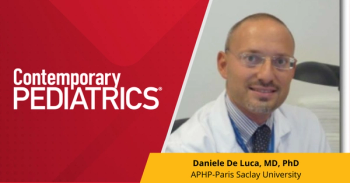
Decreasing antibiotic exposure in the neonatal intensive care unit
Controlling exposure to antibiotics is important for stewardship programs, and is even more important in neonatal intensive care unit. A report on a quality improvement program offers some good news.
The quest to reduce antibiotic resistance and to utilize antibiotic stewardship has been one of the biggest drives in medicine over the past decade. Research into the effect of exposure to antibiotics early in life has also led to a push to reduce the use in newborns and particularly in the neonatal intensive care unit. A
The investigators ran that initiative within the context a multicenter learning collaborative that was focused on reducing the unnecessary use of antibiotics. The strategies for improvement addressed the gaps seen in the core elements of antibiotic stewardship programs. Outcomes measured included the antibiotic use rate and the percentage of infants who were discharged without any exposure to antibiotics.
At the baseline of the quality initiative, the antibiotic use rate was 27.6% and it decreased to 15.5%, which was a 43% reduction in antibiotic use. The reduction was additionally maintained for >18 months. The investigators said that changes that had the biggest effect on this decrease included a 36-hour hard stop for antibiotics, a novel guideline for early-onset sepsis evaluation among infants <35 weeks, implementing a sepsis risk calculator, and adopting a 36-hour rule-out period for sepsis evaluation. During the quality initiative, the percent of infants who were discharged from the hospital without any exposure to antibiotics increased from 15.8% to 35.1%. Additionally, the perfect of infants ≥ 36 weeks who underwent an evaluation for early-onset sepsis decreased by 42.3% and among infants < 35 weeks, it went down by 26%.
The researchers involved in the quality initiative concluded that it had led to a significant reduction in both antibiotic use and exposure in their neonatal intensive care unit. They also believe that the comprehensive approach to the quality initiative could be useful to other teams that have a focus on improvement.
Reference
1. Meyers J, Tulloch J, Brown K, Caserta M, D’Angio C. A quality improvement initiative to optimize antibiotic use in a level 4 NICU. Pediatrics. October 14, 2020. Epub ahead of print. doi:10.1542/peds.2019-3956
Newsletter
Access practical, evidence-based guidance to support better care for our youngest patients. Join our email list for the latest clinical updates.







